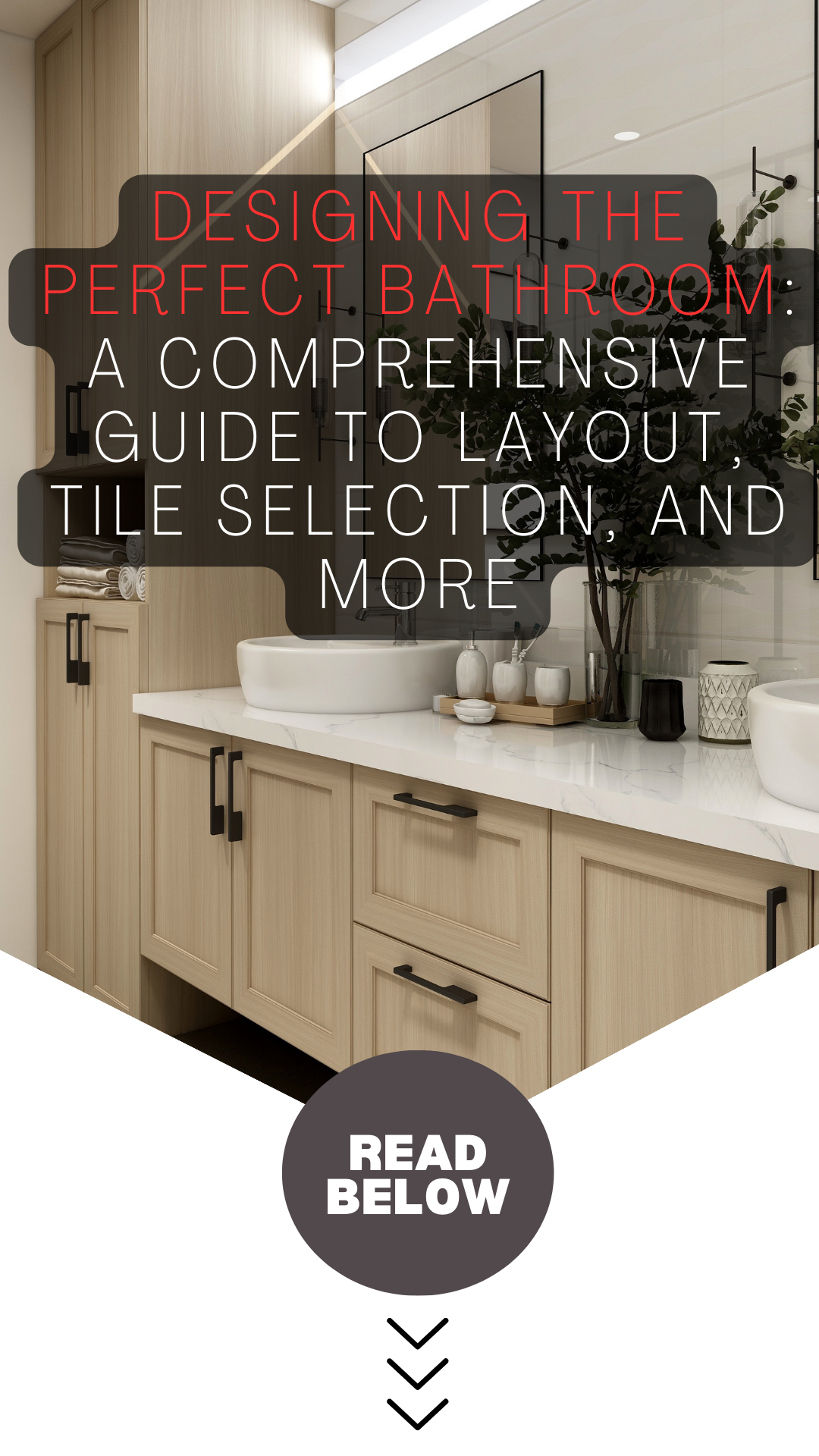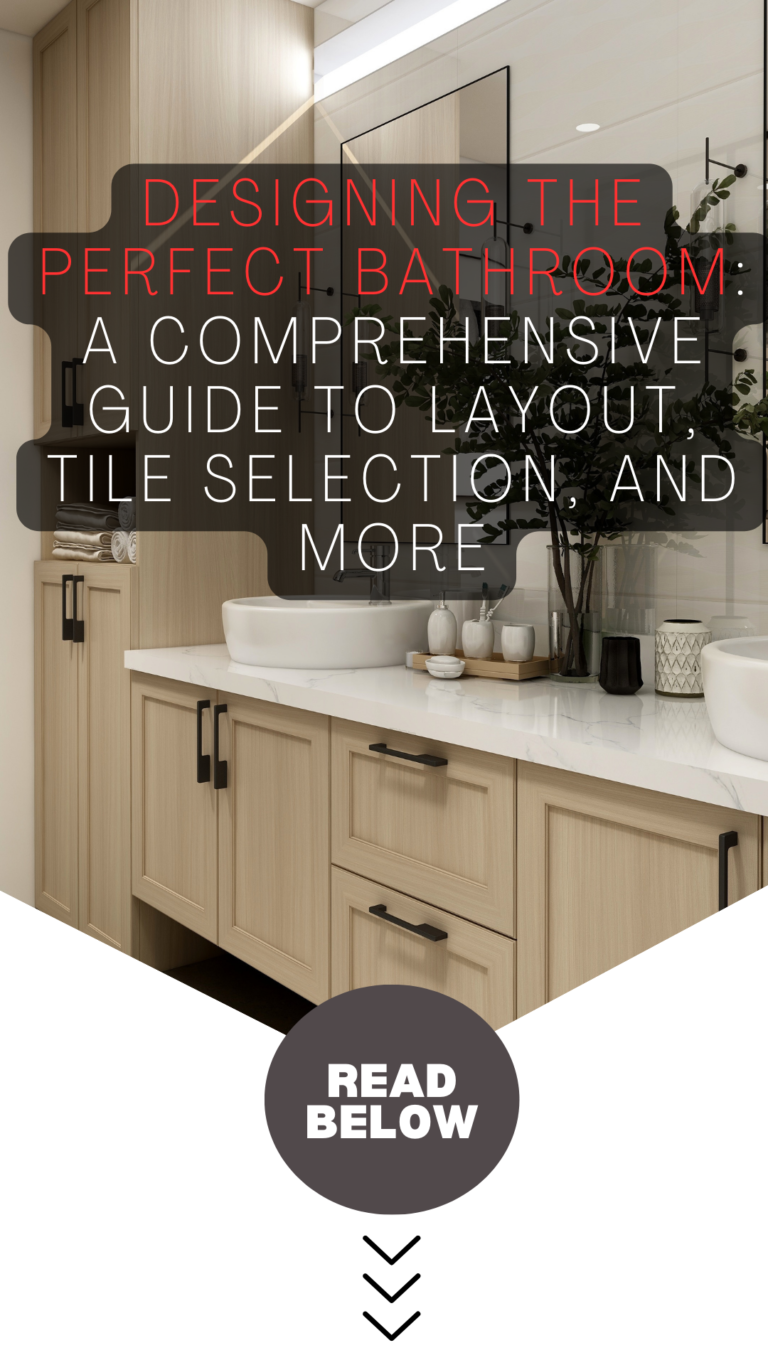
Lifestyle M Interior Design
Designing the Perfect Bathroom: A Comprehensive Guide to Layout, Tile Selection, and More
I’ve watched bathrooms change from being strictly utilitarian rooms to lavish, spa-like getaways. This comprehensive guide will assist you in designing the ideal bathroom to meet your needs and aesthetic tastes, whether you are designing a new bathroom, remodelling an existing one, or simply looking to upgrade some features.
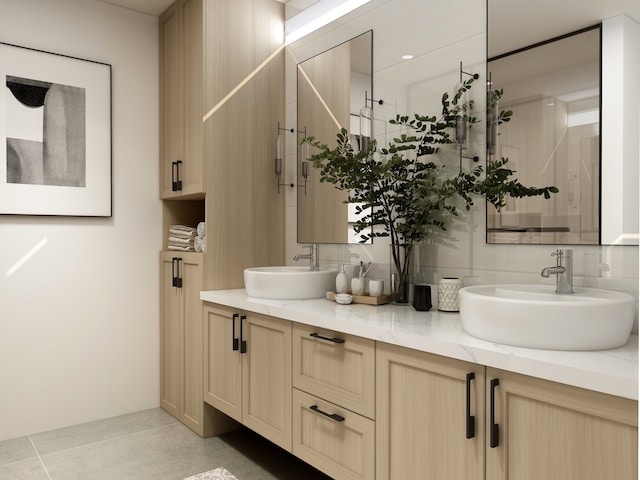
Introduction to Designing the Perfect Bathroom
One of a home’s most important rooms is the bathroom. We start and end our days there, as well as take care of our personal hygiene and grooming. A well-designed bathroom may improve our daily routines while also acting as a tranquil retreat.
Bathroom Layout Considerations
There are several things to think about while arranging your bathroom. Important factors to take into account are the room’s size and form, the placement of plumbing equipment, and the number of users.
It’s crucial to maximise the space you have in a small bathroom. Space can be saved and a room might feel more open and breezy by installing a wall-mounted toilet or a corner washbasin. A separate shower and bathtub can be an opulent addition to a bigger bathroom.
Location of plumbing fittings is another significant factor to take into account. The washbasin and shower should be located next to a window or other source of natural light, while the toilet should be positioned in an area that offers seclusion.
Finally, when designing the layout, consider how many users there will be. While a single sink may be plenty for a single user, a double vanity might be a terrific addition for families or couples.
Tile Selection and Installation Tips
The use of tiles in bathroom design is crucial. It not only improves the space’s aesthetic appeal but also offers a watertight barrier and a surface that is simple to clean. There are several things to take into account while choosing bathroom tile.
Pick a tile that is appropriate for moist regions first. Bathroom floors and walls frequently use porcelain or ceramic tiles. They are strong, simple to clean, and available in a variety of hues and designs.
Second, think about the tile’s dimensions and shape. Small mosaic tiles can provide texture and character to the room, while large format tiles can give it a smooth, modern appearance.
You also need to think about the installation strategy. To produce a smooth and waterproof surface, a skilled tile installer can make sure that the tiles are properly spaced, aligned, and grouted. This is especially important because these minor details can impact the final look.
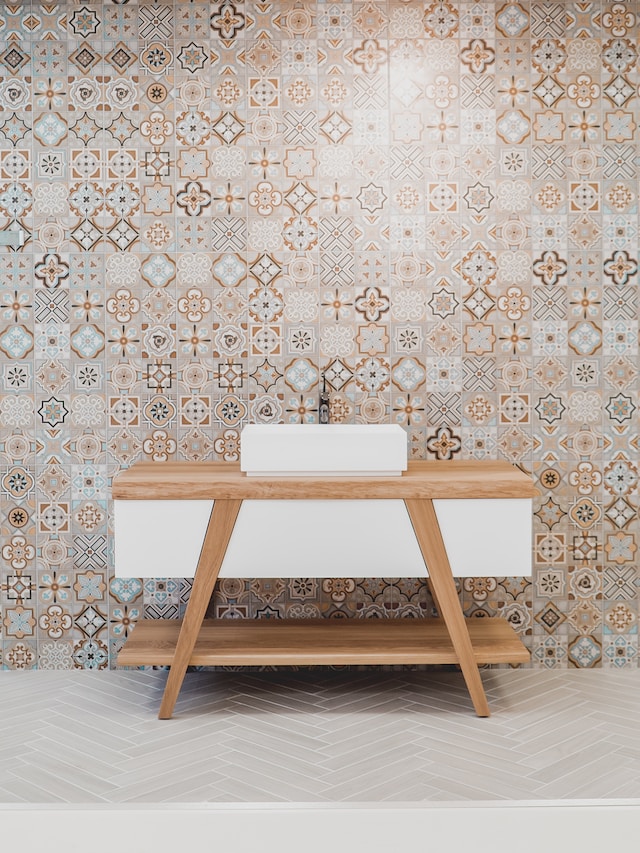
Creative Shower Design Ideas
Any bathroom’s shower is the centre of attention. A well-designed shower can create a spa-like atmosphere and improve the room’s overall attractiveness. Think about these innovative ideas when creating your shower.
Consider a walk-in shower first. A step or threshold is not necessary with this style of shower, making the transition from the bathroom floor to the shower area smooth and accessible.
Next, think about a rainfall showerhead. This kind of showerhead offers a relaxing and opulent showering experience. For greater flexibility, it can be combined with a handheld showerhead.
Finally, think of incorporating a niche or shelf for shampoo, soap and other shower necessities in the bathroom. By doing this, the shower space will remain tidy and organised.
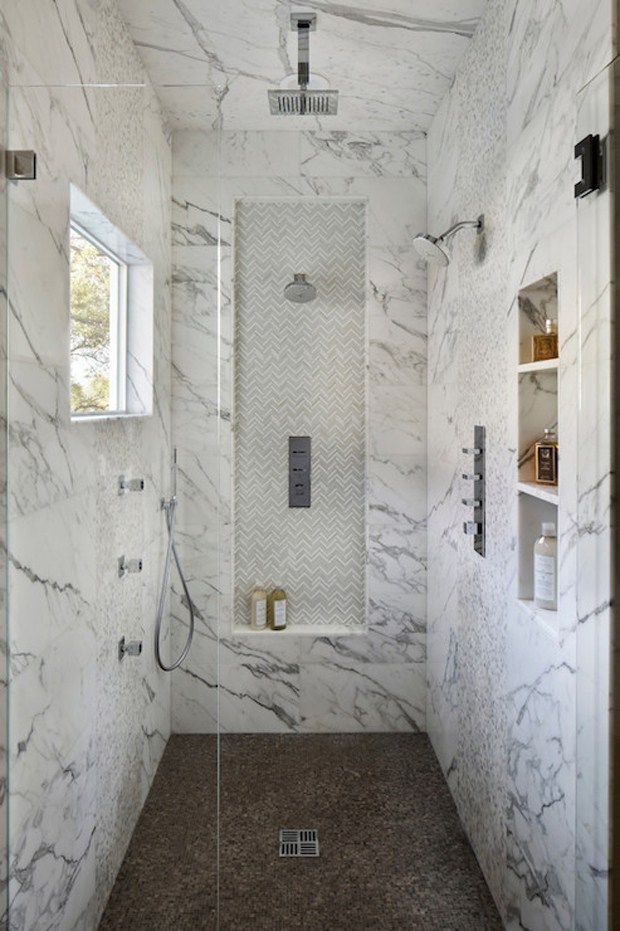
Bathtub Options for Your Bathroom
Any bathroom can benefit from having a bathtub as a soothing and opulent feature. There are various things to take into consideration while choosing a bathtub.
First, think about the bathtub’s size. While a larger bathtub can provide a spa-like atmosphere, a smaller bathtub might be appropriate for a tiny bathroom.
Second, think about the bathtub’s shape. A standalone bathtub can lend a sense of elegance and sophistication to the room, while a rectangular or oval-shaped bathtub is a traditional and functional option.
Finally, think about the bathtub’s material. While cast iron or stone tubs are more lavish and lasting, acrylic or fibreglass tubs are less expensive and easier to clean.
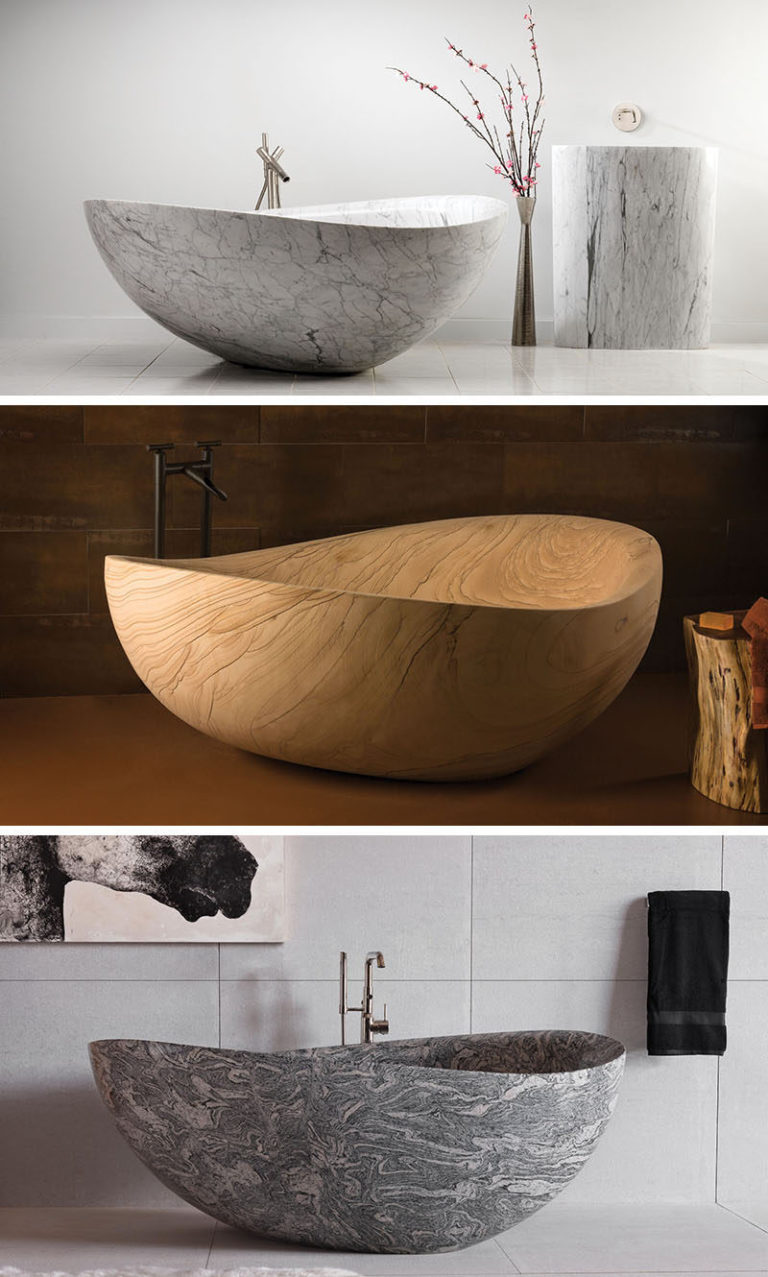
Vanity Design and Customization Options
A bathroom’s vanity is a necessary component. In addition to offering storage and countertop space, it also improves the room’s aesthetic appeal. Take into account these customisation possibilities when creating your vanity.
Start by taking into account the vanity’s size and design. While a typical vanity with doors and drawers might offer plenty of storage space, a floating vanity can give the impression of being more open and airy.
Second, think about the countertop’s construction. Because of their sturdiness and aesthetic appeal, granite, marble, and quartz are preferred materials.
Furthermore, think about your options for the washbasin and tap. A wall-mounted tap can save space and give the room a contemporary feel, while a vessel sink can offer a touch of elegance and sophistication.
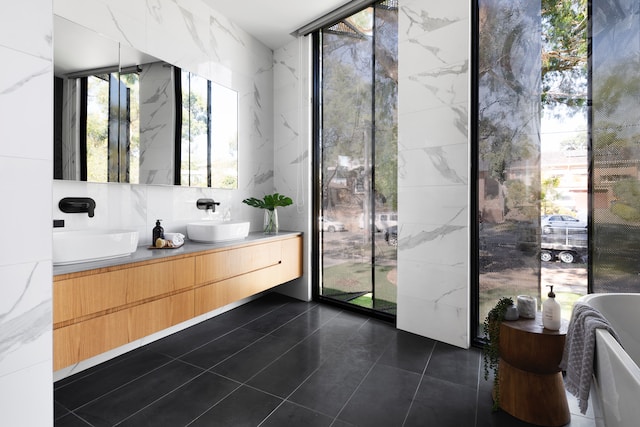
Lighting Fixtures to Enhance Your Bathroom’s Ambiance
A key component of bathroom design is lighting. It not only offers useful illumination but also improves the environment of the room as a whole. Think about these possibilities while choosing bathroom lighting fixtures.
Take into account the general illumination first. The general lighting for the area might be produced by recessed lighting or a fixture mounted on the ceiling.
Next, think about the task lighting. For the vanity or mirror area, wall-mounted sconces or pendant lights can offer focused illumination.
Finally, take accent lighting into account. LED strips or under-cabinet lighting can create a soft, soothing atmosphere in the room.
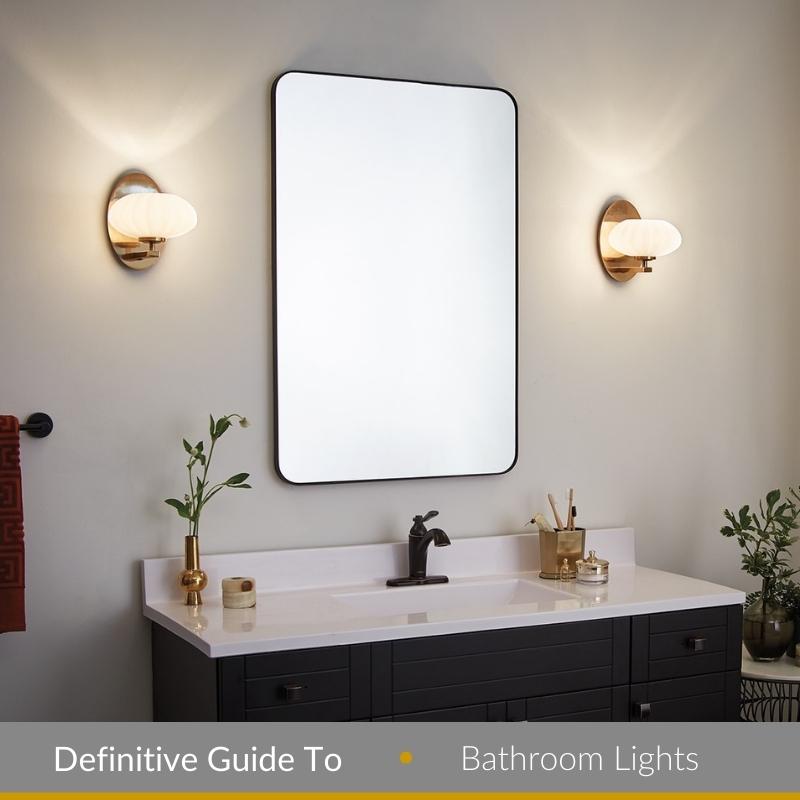
Color Schemes to Complement Your Bathroom’s Style
The use of colour in bathroom decor is crucial. It establishes the atmosphere and tone of the room and can improve the space’s overall aesthetic appeal. Think about these possibilities when choosing a colour scheme for your bathroom.
Consider a neutral colour scheme first. Beiges, greys, and whites can give the room a crisp, classic appeal.
In addition, consider a striking accent colour. A splash of colour on the walls, vanities, or accessories can give the room some character and style.
Ultimately, look into using monochromatic colours. A space can have a unified and harmonious appearance by using various tones of the same colour.
Flooring Options for Durability and Style
A crucial component of bathroom design is the flooring. It provides durability and safety in addition to enhancing the space’s aesthetic appeal. These options should be taken into account while choosing bathroom flooring.
Try a tile floor first. Ceramic or porcelain tiles are strong, simple to maintain, and available in a variety of hues and patterns.
Consider installing a vinyl or linoleum floor next. These materials offer a cushioned surface for increased safety, are reasonably priced, and are simple to install. These are perfect if slipping safety is a priority for your bathroom design.
Lastly, if you are a bit more bold and want to make a statement, take into account a natural stone floor. For a high-end bathroom, beautiful and long-lasting options include marble, granite, and limestone.
Smart Storage Solutions for a Clutter-Free Bathroom
A vital component of every bathroom is storage. It not only gives a place for towels and amenities, but it also makes the area more useful. Think about these clever ideas while planning your bathroom storage.
Select a vanity cabinet that has doors and drawers. This will keep the area tidy and organised while still providing room for towels and amenities.
Next, think about open shelving. This can give ornamental bathroom decor a home while also adding texture and interest to the room.
Finally, consider getting a medicine or mirrored cabinet. This can serve as a storage space for toiletries and medications and a surface with a mirror for applying makeup and grooming. This storage solution will come in handy especially if you are already working with a small bathroom with limited space.
Incorporating Accessibility Features for a Safe and Comfortable Bathroom
Designing bathrooms with accessibility in mind is essential. Always prioritize functionality first and who will be using the space. It improves the area’s comfort and safety while also creating a more welcoming atmosphere for users of all ages and abilities. Think about including these accessible elements when constructing your bathroom.
A walk-in shower or bathtub is ideal if the residence have accessibility issues. As a result, the transition to the shower or bathtub is made more accessible without the need for a step or threshold, giving the user more freedom.
Second, think about purchasing a toilet with a raised seat or one with built-in grab bars. Users with mobility challenges may benefit from an increase in safety and comfort as a result.
Finally, take into account a handheld showerhead or a shower bench. For those who must sit down to take a shower, this might add support and comfort.
Minimalist Bathroom Design Ideas for a Clean and Simple Look
The use of minimalist design is a common trend in bathrooms. It has a strong emphasis on clarity, utility, and sleek lines. Take into account these suggestions while creating a minimalist bathroom.
First, get rid of any extra clutter and decorations. The environment will feel open and tidy as a result. While decor can enhance a space, if you are already working with a small bathroom, it can make the space feel smaller and messier instead.
Second, pick a colour palette that is neutral. Whites, greys, and beige colours can give the room a classic, simple appearance. Again, if your bathroom is small, lighter colours help scatter the light making the bathroom feel more open and larger than it really is.
Finally, select fixtures and accessories that are straightforward and useful. The space can benefit from having a wall-mounted toilet, a floating vanity, and a frameless shower enclosure. Having more floor space visible is another trick interior designers use in small enclosed areas as it gives the illusion of a larger room.
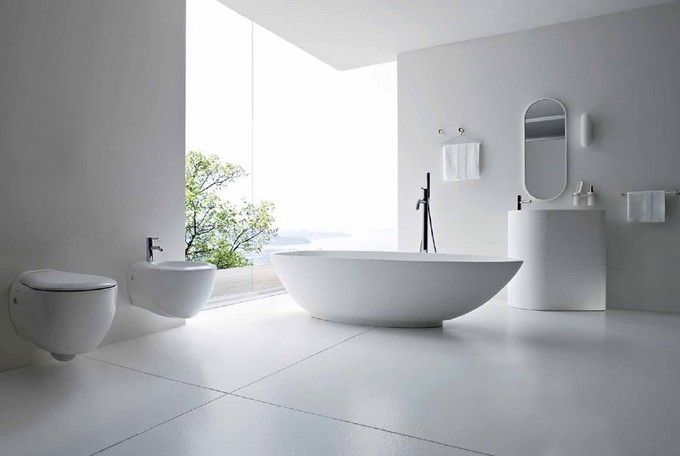
Luxury Bathroom Design Ideas for a Spa-Like Experience
Another well-liked trend in bathroom decor is luxury. It places a strong emphasis on luxury, sophistication, and elegance. Take into account these suggestions when creating a luxurious bathroom.
Pick first-rate components and finishings. Due of their sturdiness and aesthetic appeal, quartz, marble, and granite are preferred materials. These look and feel high-end and will give your bathroom a lux vibe.
Second, think about installing a walk-in shower with numerous showerheads and technology or a freestanding bathtub. Take it a step further and consider a stone freestanding tub instead of ceramic porcelain. The user may enjoy a spa-like experience as a result.
Finally, for more ambiance and elegance, think about including a fireplace or a chandelier. Although not common in traditional design, these are often found in higher end bathroom designs.
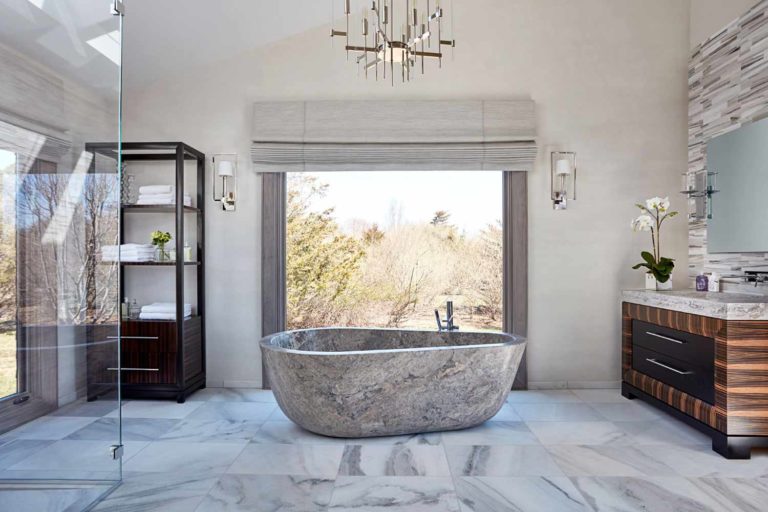
Conclusion: Bringing it all Together for Your Perfect Bathroom
It takes careful planning, close attention to detail, and a focus on both functionality and aesthetic to create the ideal bathroom. You can design a bathroom that meets your demands and aesthetic preferences by taking into account the layout, tile choice, shower design, bathtub option, vanity design, lighting fixtures, colour schemes, flooring alternatives, storage solutions, accessibility features, and design trends. Your ideal bathroom is within reach with the correct design and planning, regardless of whether you want a minimalist, luxurious, contemporary, or ecological design.

